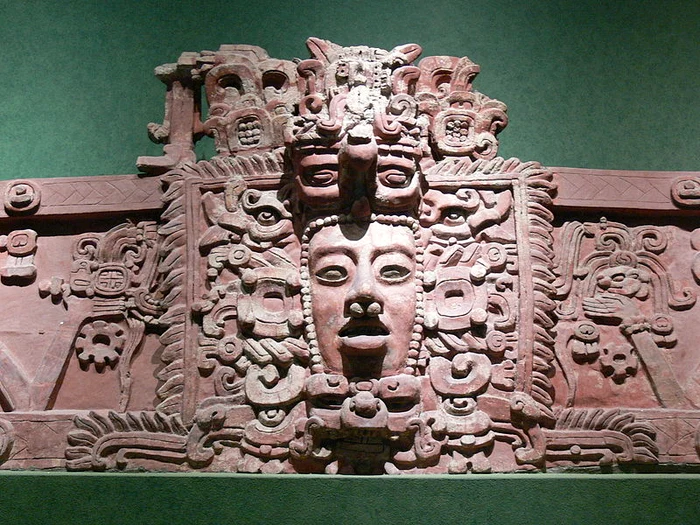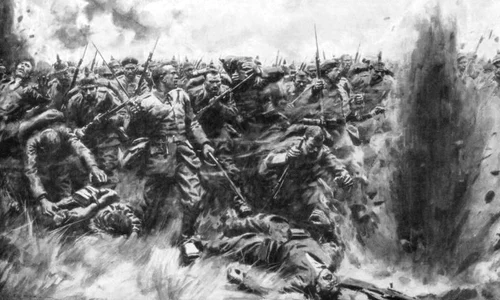
The Mayans, from history to myth
The classic maya civilization (~250-900 p.Hr.) is an extremely popular subject, but at the same time a particularly misunderstood one. Its popularity among professionals and amateurs is important because it ensures the continuity of archaeological reseach, but at the same time highly problematic because it endows this somehow fascinating culture with loads of european prejudices, immoderacies and evene fears. Despite recent attempts to correct this ongoing hyperbolism about the Maya, the romanced enigma surrounding them seems to grow.
This situation is partially due to the fact that the western cultural area and the modern man have been mostly influenced by cultures in Mesopotamia, Greece, Rome, Egypt or China, from whom Europe borrowed institutional, political, social or artistic structures and models;in the meantime the ancient Maya remained in the shade for an extended period of time. This civilization had little impact on contemporary life in general, and when it was discovered, people preferred to soak it in myth rather than researching the complicated details of its history. They were more attracted to their prophecies or calendars.
The Old World did not have any contacts to the Mayans till about 1502, but a gradual, more documented approach on their history only began long after their demise, in the 19thcentury. The Maya may not have contributed much to the practical and mental heritage of modern man, but they certainly play a vital part in the collective cultural imagination. They are a very vivid presence in Jared Diamond’s book, “Collapse”, and in Mel Gibson’s movie, Apocalypto”, works of art in which the lack of archaeological and textual data is compensated by a great deal of mysticism and more or less dubious ideologies. Eventually, the past as it truly was may not be that essential in our thinking and development, in comparison to the ambiguities and gaps in history, that allow the functioning of another type of logic, that of imagination. As for the Greeks, Romans or Chinese, their civilizations are pretty well documented so the games of fantasy have limitations, but the Mayans allow us to recreate them at will.
A very common myth is that of Mayan pacifism. That is, leaving aside their sacrificial rituals which were quite barbaric, the people highly appreciated peace. The myth of this so-called pacifism was to a certain extent an attractive intellectual refuge during, say, the war in Vietnam, when archaeologists start are digging up the majestic fortification at Becan. The roots of the myth expand however much further, till the 1880s. the ancient Maya were considered a special people that harbored intellectual and creative aspirations, that evaded the conflictual cycles characteristic of the rest of the world. This extremely heavenly, idealizing perspective reached its peak in the 40s and 50s, after the war.

The ancient Maya had become an embodiment of the mythical Shangri-La portrayed by James Hilton, therefore cementing the collective imaginary structure, all the more that archaeologists did not toil to suppress it. Because of their imagined rejection of war, they were a unique appearance in the ancient world, beyond the mainstream cultural evolution. This mythical reputation also brought about immediate advantages, boosting fund raising in research.
The myth came into being despite the quite numerous pieces of data that clearly suggest that this ancient people was, like all the rest, inclined to engage in violent actions and warfare, and when the Maya met the Spaniards in the 16thcentury, the encounter was definitely not one that would consider peace an option, according to their own historiographical traditions. For certain reasons, archaeologists did not insist on debunking this fantasy, on the contrary, they perpetuated an informational void that led to what Schikel termed “the mythical reinvention”.
The Maya writing system was not fully deciphered till the 1960s and it was only since then that the idea of a Mayan love for peace and the mysticism surrounding the civilization started to be seriously questioned, once the texts seemed to reveal that dynastic vendettas, complete eradications of cities or enslaving whole populations were actually common practices in Mesoamerica.
But history did not win. The myth just suffered a revolution, turning the peaceful, sensitive Mayans into fearful, bloody warriors, much like Aztecs or farther away, Assyrians. This perspective is very often hyperbolized as well, especially when the contemporary world is faced with sinister forms of violence. The logic of the myth allows therefore two opposed views on the past, as a consequence of the discourse about the present (which is the center) and the periphery (which are the Maya). In either case, they appear to be extremely different, and in either case a projection of the desires and fears of modern man. The reality is most probably somewhere in between. The Mayans did take part in wars but not on regular basis and they did perform bloody sacrifices, but again, not that often. Anyhow, what is certain is that the civilization can no longer be offered as an example of political balance and our view of it should be reorganized, this time closer to history than myth.
There are many issues historian need to figure out, common material for debate for a while in scientific circles. What was the context of the Mayan appearance and ascension? What political factors influenced the development of this people? What can we know about population, social organization, political control? How and what did they trade? How can we explain their collapse? How did the Spaniards perceive them? There is no easy answer to these questions. Norman Yoffe drew attention to the fact that evolutionary models used by anthropologists are not always applicable, because they are forcing the complex ancient societies to fall into a single category of “civilization” or “state”. Archaeologists tend to label the studied cultures with traits such as “unified” or “grandiose”. Or to draw analogies that are also problematic:if the Chinese of Aztecs had great cities and well-defined social classes, then so must have the Maya, but so far the evidence is controversial or at times non-existent.
When the Spaniards reach Mesoamerica, they seem to find here complex structures dominated by kings an noblemen. Farmers pay them taxes. Powerful families occupy political and religious centers. Temples, palaces, schools and monuments fill in the cultural space. Priests possess the sacred knowledge. Merchants trade with slaves, obsidian, feathers, chocolate, gold, leather or jade. Basically, these elements may have solidified till the 1600s, when upon the arrival of the Spanish conquistadors there lived about 600.000 descendants of the classical Maya, scattered in small communities in the north of the Yucatan peninsula. Every community was governed by a local chieftain named batab, who ruled over several hundred subjects.
Sometimes these rulers established alliances or initiated military actions that resulted in larger kingdoms. The kings had the title halach uinicand sometimes they dressed in the classical fashion (ajaw). One class of the hereditary nobility (almehenob) dominated the administrative structures. A lot of these features were apparently inherited from older eras, but it is hard to determine exactly which of them were also specific for the Classical age. The medieval Mayans were for instance quite the warmongers, but can we say the same thing about their ancestors? The ethno-historical analogy generally used in these cases is very often deceiving and selective. We cannot conclude that the medieval Maya the Spaniards encountered were the same as the classical Maya.
Direct historical assumptions are to a certain degree valid, but at the same time they are not, because we must also take into account that the older Maya from northern Yucatan had a distinct cultural matrix. According to their own written texts, they were highly influenced by Mexican forays. The leaders of the 16thcentury used the title ajaw, but they were not kings in the classic meaning of the word. And they rejected a lot of traits available for the classic age:the style of royal inscriptions, the very elaborated polychrome ceramics, the long-term calendars. The population of the Middle Ages was also lower than that of antiquity, so the institutions must have differed a bit as well.
It is tempting to assume that the old Maya possessed slaves or had a hereditary nobility, like their descendants, but such retrospective projections can prove to be erroneous. It is as if we tried to understand the Greeks of the bronze age using the information available in the age of Pericles. Until we can benefit from a richer archaeological and epigraphic body of knowledge, we are stuck somewhere between history and myth.
Read more on Mesoweb!















